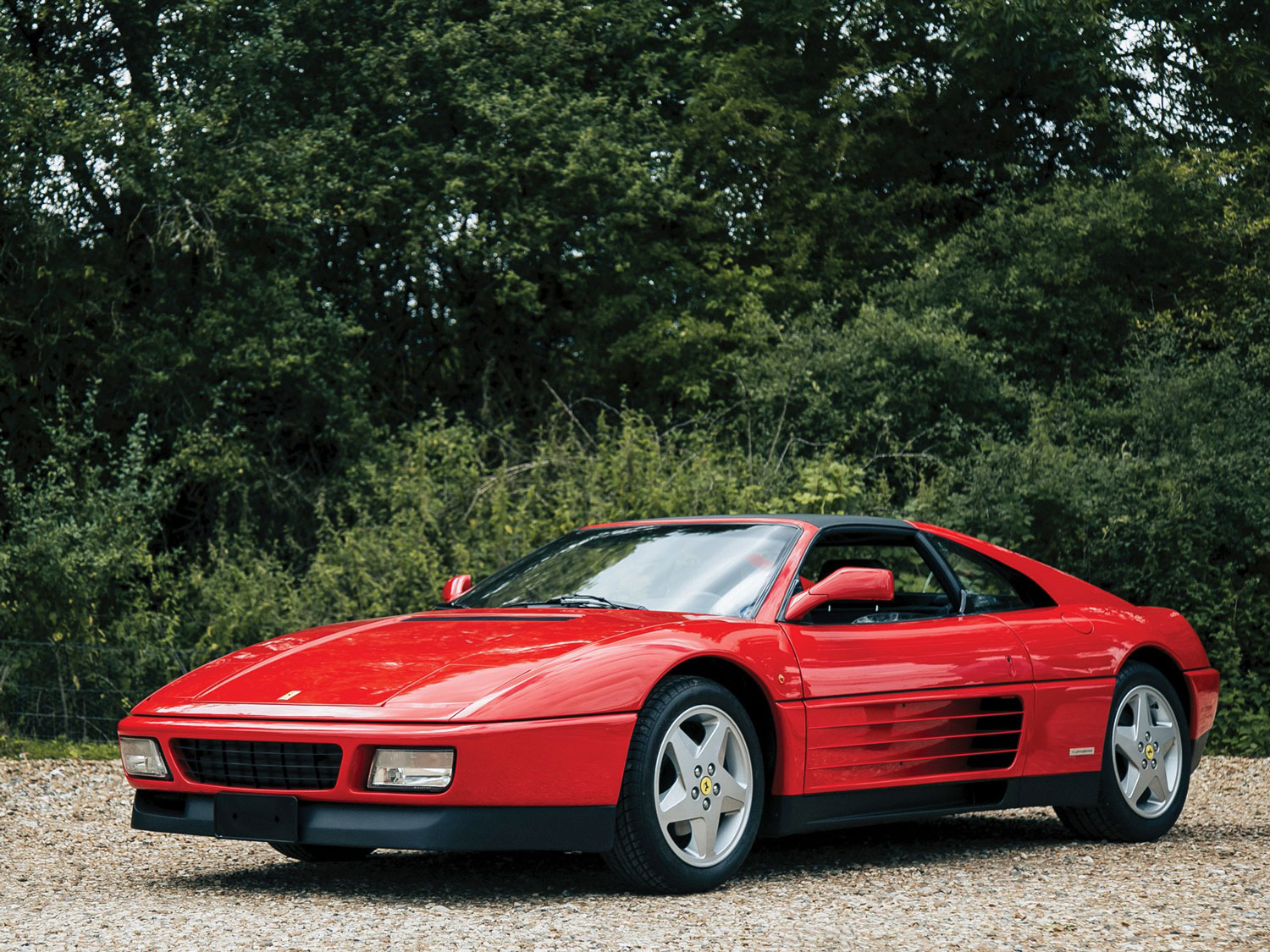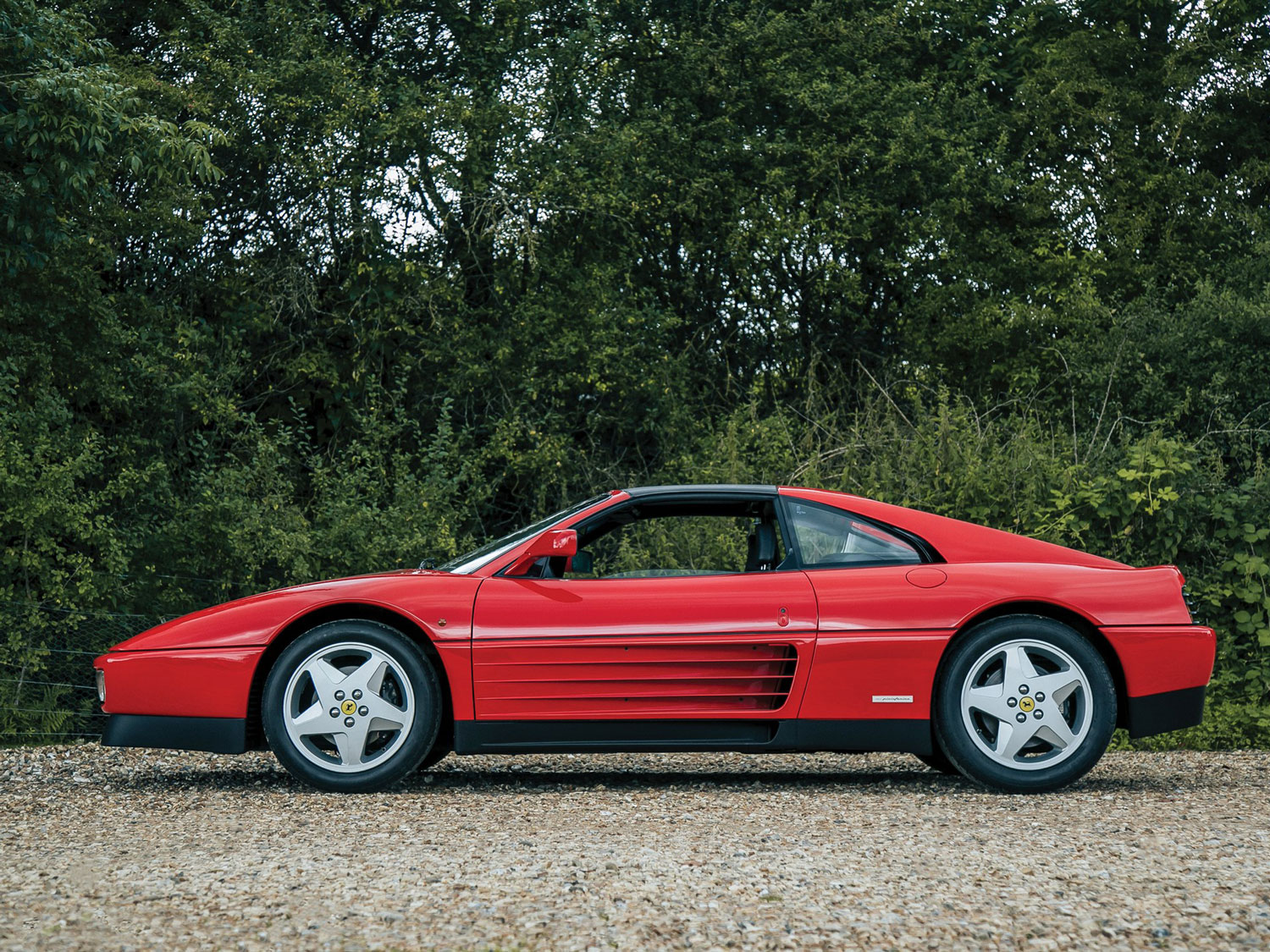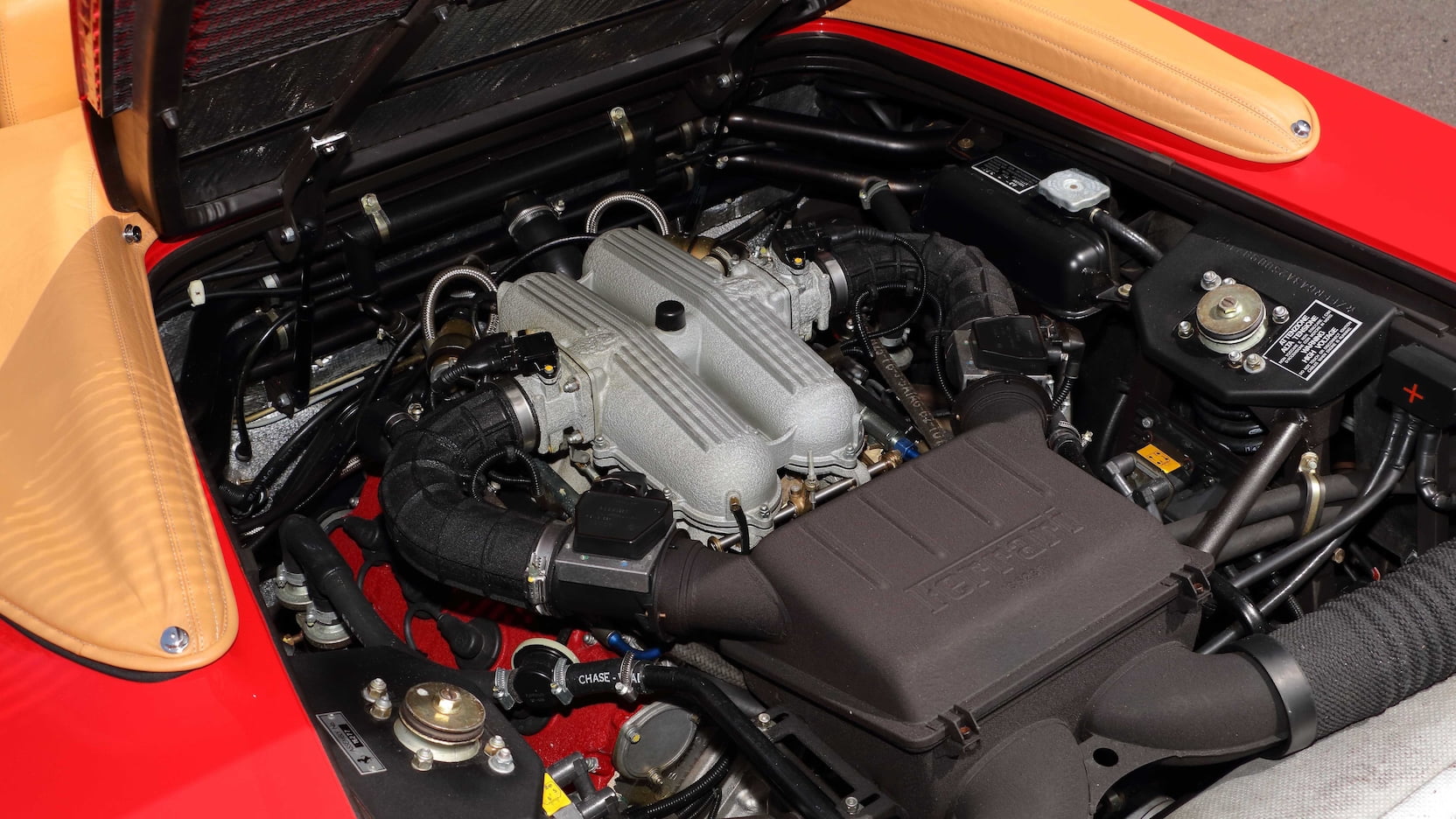The 1989–95 Ferrari 348 is spinning its wheels in the market
Think it’s impossible to be ho-hum about anything wearing a Ferrari badge? You aren’t alone. Of course, the classic car market isn’t a slave to desire like the rest of us, which means it shines light on a completely different (read: objective) perspective. Take the 1989–95 Ferrari 348, for example.
The mid-engine sports car, introduced as the long-awaited successor to the 308/328 series, has a modest Hagerty Vehicle Rating of 54, which means it is neither hot nor cold, it’s lukewarm. Meanwhile, average values fell 4 percent in our most recent pricing update in May.
What does that mean? The Hagerty Vehicle Rating is based on a 0–100 scale and considers the number of vehicles that are quoted and insured through Hagerty and takes into account auction and private sales results. A vehicle that is keeping pace with the overall market has an HVR of 50. So at 54, the Ferrari is simply treading water. The total is a slight improvement over the last HVR, thanks to a jump in insurance activity. Hagerty valuation editor Andrew Newton says that indicates more cars are changing hands at lower values and are then being added to Hagerty insurance policies.
The Ferrari 348 takes its styling cues from the popular Testarossa, with its side-mounted air intakes and strakes, and it received a longitudinally-mounted engine with a transverse gearbox that mimicked the layout of Ferrari’s F1 cars at the time. The sports car’s T design helped centralize mass between the wheels and provided its “T” designation—348 TB for the coupe and 348 TS for the Targa-top version. Its 3.4-liter four-cam V-8 made 300 horsepower and propelled the car from 0–60 mph in 5.6 seconds and a top speed of 171 mph. Standard anti-lock brakes afforded equally impressive stopping abilities.



Later versions (1993–95) received 12 more horsepower and a minor suspension revision; these cars are referred to as 348 GTBs. A 348 Spyder convertible was introduced in 1993 and lasted through ’95, one year longer than the coupe and Targa. Two limited-edition models were built, the U.S.-only 1992–94 Series Speciale (100 examples) and the street-track 348 Challenge (57 built).
GTB models are more valuable than TB and TS versions. A GTB in #1 (Concours) condition has an average value of $77,300, compared to $59,200 for a 1994 348 TS. A GTB in #2 (Excellent) condition carries an average value of $61,200, while one in #3 (Good) condition is $50,900 and #4 (Fair) is $41,900. Series Speciale versions are worth almost as much.
The 348, which cost about $95K when new, bottomed out in January 2014 before rising 90.5 percent from that point until January 2017, as it transitioned from used car to collector vehicle. And, to be fair, while its #2 values are down slightly, so are prices for Testarossas and F355s.

Newton says the majority of insurance quotes come from Gen-Xers, who account for 37 percent. The next-highest is Millennials at 14.5 percent.
The most ever paid at auction for a Ferrari 348 is €437,000 ($490,000) at RM Sotheby’s 2017 Leggenda E Passione sale for a 1994 348 GT/C LM race car that finished 11th in the 24 Hours of Le Mans in 1994. At the same auction, a 1992 348 TB Challenge race car went for €241,500 ($270,000) and a 1991 Ferrari 348 TS sold for €149,500 ($167,000).
A 1990 Ferrari 348 TB Zagato Elaborazione, one of 10 outfitted by Zagato, sold for €218,500 ($245,000) at RM Sotheby’s Villa Erba sale in May 2019.
With numbers like that, the 348 is far from ho-hum. It’s still a Ferrari, after all, and its V-8 engine and Testarossa-like looks are far from vanilla. For now, however, the market is telling us that this particular Prancing Horse isn’t doing anything too extraordinary. We’ll have to wait and see where it goes next.








